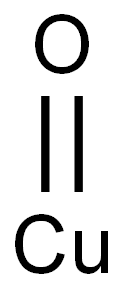Cerium dioxide
Synonym(s):Ceric oxide;Ceric oxide, ceria;Cerium(IV) oxide
- CAS NO.:1306-38-3
- Empirical Formula: CeO2
- Molecular Weight: 172.1148
- MDL number: MFCD00010927
- EINECS: 215-150-4
- Update Date: 2025-01-27 09:38:02

What is Cerium dioxide?
Chemical properties
Cerium dioxide is white to faintly yellow powder. Relative density 7.132. Melting point 2600°C. Insoluble in water, not easily soluble in inorganic acid. Need to add reducing agent to help dissolve (such as hydroxylamine reducing agent).
Physical properties
White powder in pure form; technical grade material is pale yellow; presence of other lanthanide elements as impurities may impart reddish color; cubic crystal; density 7.65 g/cm3; melts at 2,400°C; insoluble in water.
Physical properties
Pale yellow cubic crystals. Abrasive for polishing glass, interference filters, antireflection coating. Insoluble in water, soluble in H2 SO4 and HNO3, but insoluble in diluted acid.
The Uses of Cerium dioxide
The addition of CeO2 to CuO/TiO2 increases specific surface area and inhibits sintering and pore size growth at high temperatures. It is used as an additive in glass industry. Cerium dioxide is mainly used as such or in formulation as a high precision polishing agent for glass products, as catalyst or catalyst support. Polishing and decolorizing glass; opacifier in vitreous enamels and photo chromic glasses; heat-resistant alloy coatings; as a cracking catalyst; as a catalyst for automobile emission control; in ceramic coatings; in phosphors; in cathodes; in capacitors; in semiconductors; in refractory oxides; gemstone polishing, as raw material for the production of glass and ceramics as well as additives in paints and varnishes.
Definition
Cerium dioxide is a metal oxide with formula CeO2. It is used for polishing glass, in coatings for infra-red filters to prevent reflection, and as an oxidant and catalyst in organic synthesis.
Preparation
Cerium(IV) oxide may be obtained by heating cerium oxalate, carbonate or other salts at elevated temperatures:
Ce2(C2O4)3 + 2O2 → 2CeO2 + 6CO2
What are the applications of Application
Cerium(IV) oxide is used in ceramics, and to polish glass and stones. It is applied as a solid electrolyte in fuel cells. It can also be employed as a co-catalyst in a number of reactions. It is also used as an antioxidant and to generate hydrogen through water splitting. It is used as a high-temperature hydrocarbon oxidation catalyst in self-cleaning ovens. It can be used in infrared filters, incandescent mantles and sunscreens in combination with other materials. It finds use as a catalyst support and to sensitize photosensitive glass.
General Description
Cerium(IV) oxide (CeO2) is a class of rare earth materials which can be synthesized by a variety of methods which include thermal hydrolysis and hydrothermal method. Its properties include a high refractive index, and dielectric constant.
Flammability and Explosibility
Not classified
Properties of Cerium dioxide
| Melting point: | 2600°C |
| Density | 7.13 g/mL at 25 °C(lit.) |
| storage temp. | Storage temperature: no restrictions. |
| solubility | insoluble in H2O, dilute acid solutions |
| form | powder |
| Specific Gravity | 7.132 |
| color | Yellow |
| Odor | Odorless |
| Resistivity | 10*10 (ρ/μΩ.cm) |
| Water Solubility | insoluble |
| Crystal Structure | Cubic |
| Merck | 14,1989 |
| Stability: | Stable, but absorbs carbon dioxide from the air. |
| CAS DataBase Reference | 1306-38-3(CAS DataBase Reference) |
| NIST Chemistry Reference | Cerium dioxide(1306-38-3) |
| EPA Substance Registry System | Cerium oxide (CeO2) (1306-38-3) |
Safety information for Cerium dioxide
| Signal word | Warning |
| Pictogram(s) |
 Exclamation Mark Irritant GHS07 |
| GHS Hazard Statements |
H315:Skin corrosion/irritation H319:Serious eye damage/eye irritation H335:Specific target organ toxicity, single exposure;Respiratory tract irritation |
| Precautionary Statement Codes |
P261:Avoid breathing dust/fume/gas/mist/vapours/spray. P271:Use only outdoors or in a well-ventilated area. P280:Wear protective gloves/protective clothing/eye protection/face protection. |
Computed Descriptors for Cerium dioxide
| InChIKey | CETPSERCERDGAM-UHFFFAOYSA-N |
Cerium dioxide manufacturer
Star Earth Minerals Pvt Ltd
Related products of tetrahydrofuran








You may like
-
 Cerium(IV) oxide CAS 1306-38-3View Details
Cerium(IV) oxide CAS 1306-38-3View Details
1306-38-3 -
 Cerium(IV) oxide CAS 1306-38-3View Details
Cerium(IV) oxide CAS 1306-38-3View Details
1306-38-3 -
 Cerium(IV) oxide CAS 1306-38-3View Details
Cerium(IV) oxide CAS 1306-38-3View Details
1306-38-3 -
 Cerium(IV) oxide, REacton™, (REO) CAS 1306-38-3View Details
Cerium(IV) oxide, REacton™, (REO) CAS 1306-38-3View Details
1306-38-3 -
 Cerium(IV) Oxide CAS 1306-38-3View Details
Cerium(IV) Oxide CAS 1306-38-3View Details
1306-38-3 -
 Cerium(IV) oxide CAS 1306-38-3View Details
Cerium(IV) oxide CAS 1306-38-3View Details
1306-38-3 -
 Cerium(IV) oxide CAS 1306-38-3View Details
Cerium(IV) oxide CAS 1306-38-3View Details
1306-38-3 -
 Cerium(IV) oxide CAS 1306-38-3View Details
Cerium(IV) oxide CAS 1306-38-3View Details
1306-38-3